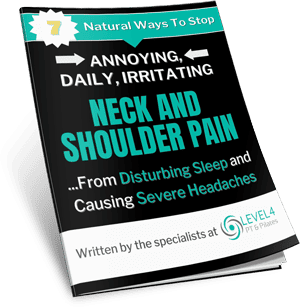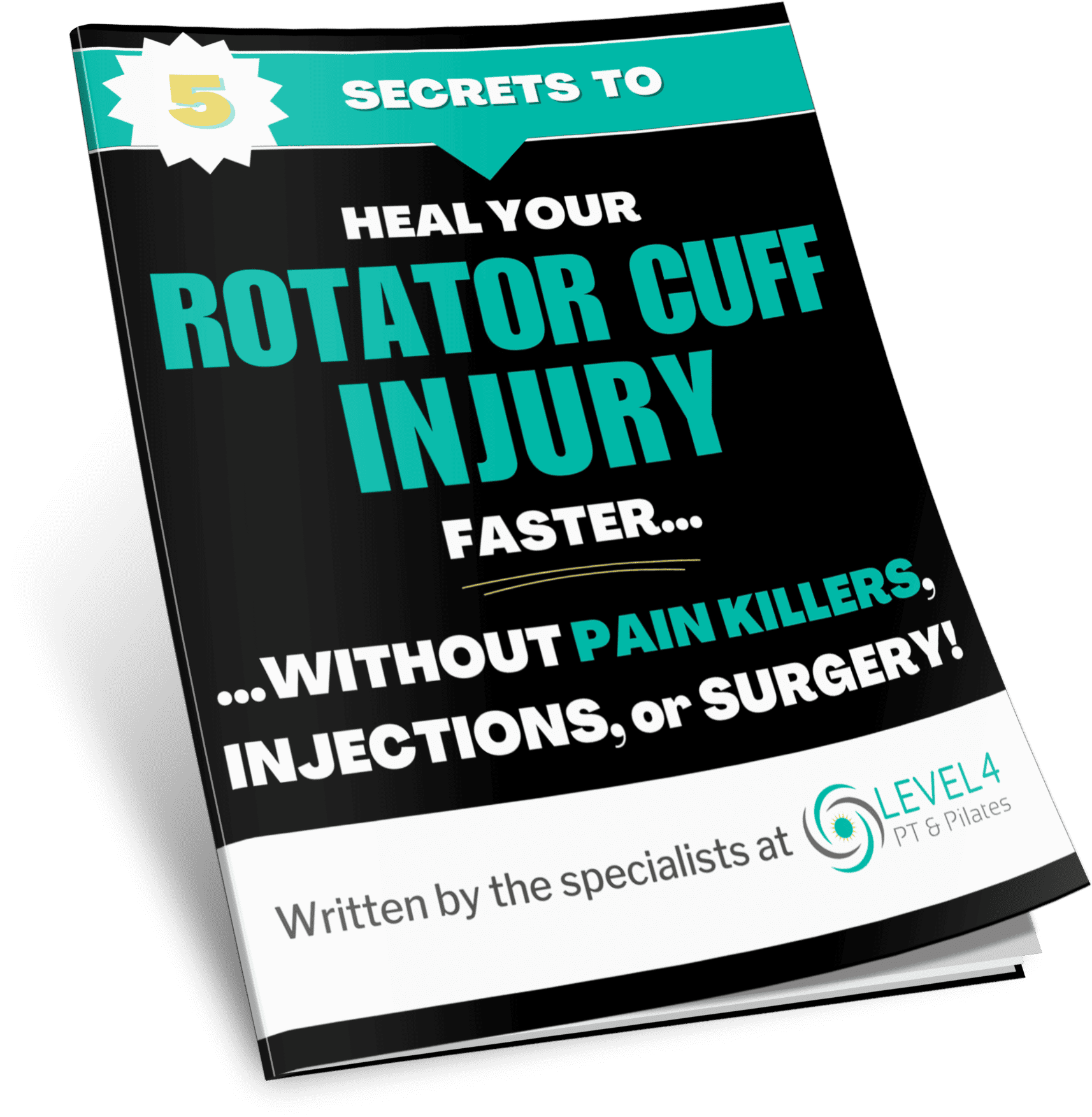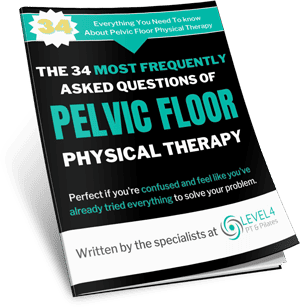7 Best Core Exercises (You’re NOT Doing)…
What Are The Best Core Exercises? … to Strengthen Your Back, Prevent Lower Back Pain and Keep a Healthy and Happy Spine for Life

If you have lower back pain, you are not alone. About 80 percent of adults experience low back pain at some point in their lifetimes. It is the most common cause of job-related disability and a leading contributor to missed work days. In a large survey, more than a quarter of adults reported experiencing low back pain during the past 3 months.
So, if your reading this article, most likely I know I’m talking to the right person!
**Personal Story Alert!**
At forty years of age, I felt like my life was literally over. I had been abusing my body for many years and never knew it. Quickly realizing I was making the same mistakes many others do as we go through life – even with my own fitness routines.
I lost focus and let myself slide from a fit young man who played professional soccer, to a person who was literally a shadow of his former self. Then, I allowed myself to continue this less than optimal lifestyle that I was living, for many years.
I truly hate the fact that I’m getting older, as I’m sure most of us do. We all think about it from time to time.
We begin to get forgetful, cranky, irritable, our eyesight and balance gradually begins to fail, and we inevitably begin to notice that we miss a step or two here and there. Eventually we begin to accept this as just a part of our evolution into middle age.
“But, it’s our fate in life to get older, feel aches and pains especially in our lower back and wither away until we hit the old nursing home and wait to die! Right?”
WRONG! Or better said… HELL NO!
The Facts
When it comes to the spine, as we mature in life, some wear and tear changes are normal over time, but there are several things you can do RIGHT NOW to help maintain your spine’s flexibility, health and comfort to strengthen your back muscles, prevent lower back pain and keep a healthy and happy spine… well into your golden years.
The problem is that most of Americans dealing and suffering with lower back pain don’t seek treatment.
And if you’re automatically thinking it’s a gender problem, well think again.
Men and women are equally affected by low back pain, which can range in intensity from a dull, constant ache to a sudden, sharp sensation that leaves the person incapacitated.
Pain can begin abruptly as a result of an accident or by lifting something heavy, or it can develop over time due to age-related changes of the spine.
But if you say, you are a laid-back, throw up the “shaka”, (hang loose) kind of person, well I have some news for you too.
Sedentary lifestyles also can set the stage for low back pain, especially when a weekday routine of getting too little exercise is punctuated by strenuous weekend workout.
Check out this past article I wrote about “How Sitting Is Taking Years Off Your Life.”
Although, most lower back pain is acute, or short term, and lasts a few days to a few weeks, it tends to resolve on its own with self-management and there is no residual loss of function.
But, just to make sure you understand the differences between the stages of back pain, I have listed them below.
Three General Back Pain Stages
- Acute:
- Majority of acute back pain is mechanical in nature, meaning that there is a disruption in the way the components of the back (the spine, ligaments, tendons, muscles, intervertebral discs, and nerves) all fit together within orchestrated movements.
- Defined in accordance to lower back pain as lasting between 10 days to less than 6 weeks.
- Subacute:
- Tissues have attempted to self-heal without addressing the root cause or the aftermath.
- Defined as pain lasting between 7 weeks to 12 weeks.
- Chronic:
- Defined as pain that persists for 12 weeks or longer, even after an initial injury or underlying cause of acute low back pain has been treated.
- About 20 percent of people affected by acute low back pain develop chronic low back pain with persistent symptoms at one year.
- In many cases, conservative treatment successfully relieves chronic low back pain, but in other cases pain persists despite medical and surgical treatment.
Not “Fake News”
The magnitude of the burden from low back pain has grown worse in recent years. In 1990, a study ranking the most burdensome conditions in the U.S. in terms of mortality or poor health as a result of disease put low back pain in sixth place; in 2010, low back pain jumped to third place, with only ischemic heart disease and chronic obstructive pulmonary disease ranking higher.
Click this link for <More Low Back Pain Facts>
To make matters worse, a recent study revealed that medical doctors in the U.S. only referred 10% of the population dealing with back pain to a physical therapist during the years of 1997-2010 – while prescription drugs rose an alarming 45% and continues to climb every year.
Click here to read the study yourself.
No wonder we have an opioids addiction problem in this country that is out of control.
YIKES!
A Broken Medical System
You might have already experienced this yourself, but physical therapists working in the typical medical model are trapped in an insurance-based system that dictates your treatment. Their priorities have to do with financial considerations and NOT for what is right or needed for the patient to get the best outcome. So, the medical practitioner’s hands are tied behind their backs. But this is another article right up in itself.
This article is not to instill fear in you but rather make you aware that there is a better way. Don’t be another statistic! I’m here to guide you on how to make a strong, healthy and happy spine, so you may enjoy great health for many years to come.
In the rest of this article I will show you the 7 best core exercises to help strengthen your core muscles, maintain a healthy and happy spine, and continue with the active life doing the things you love and deserve. Life doesn’t end at 40 unless you say it does. Take it from me.
Were Fitness Routines Goes Wrong
Traditional core training has often involved movements that flex, twist and extend the spine… Not really functional or the best core exercise for anyone. However, more recent research on core training has shown that the core functions more to stabilize the spine than to induce movement. “In many real-life activities, the core muscles act to stiffen the torso and function primarily to prevent motion. By stiffening the torso, power generated at the hips is transmitted more effectively by the core” (McGill, 2010.) Click this link to read the article.
Furthermore, repeated loaded flexing of the spine has been shown to cause premature wear and tear to the annulus of the intervertebral discs (McGill, 2007.) Click here.
Thus, if we can find exercises that load the core without inducing motion, we can effectively and safely train the core. Front planks, side planks, and rear planks are excellent exercises to begin training core stability; however, once our clients are successful in these more stable postures, advancing to a progressed group of exercises are advantageous movements to enhance core performance.
The purpose is to train the core muscles to activate prior to movement helping to stabilize the spine. In individuals without dysfunction, movement of the upper extremity it preceded by contraction of the erector spinae, multifidi, transverse abdominus and both internal and external oblique muscles (Voight et. al., 2008.)
Click the link to read the article: https://www.ncbi.nlm.nih.gov/pmc/articles/PMC2953333/
These individuals demonstrate timing and rhythm in their core contractions which leads to enhanced power transfer and the ability to better mitigate spine injury.
Because sudden loading is a common low back injury mechanism, conditioning for proper response to sudden imposition of spine loads is an important consideration for injury prevention (Radebold et al., 2000.)
You can read the short summary of the article by clicking the link below. https://www.ncbi.nlm.nih.gov/pubmed/10767807
Solution
So, if you or somebody you know has been dealing with lower back pain, it’s no reason to consider yourself done with living a full, vibrant life. The choice is really yours.
Because if you haven’t captured the message yet, a strong core helps prevent low back pain. Considering 8 out of 10 Americans experience back pain at some point in their lives, protecting it should be a priority in your fitness routine.
If you participate in the sport of “life”, whether playing a sport, wanting to be able to be active with your grandchildren or just want to remain active and mobile, then strengthening your core can boost your performance level, regain or maintain a more active and mobile life you deserve.
The following are the best core exercises that we use to train our clients to preemptively activate the core in a neutral spine position, improving: stability, function, performance and durability.
Ready to get started and begin performing the 7 best core exercises most people are not doing to appropriately strengthen their back, prevent low back pain, so they can keep a healthy and happy spine for life? Then what are you waiting for?…. Lets go!
Deadlift (KB, DB, Barbell, or Hexbar)
Proper Deadlift form starts with the weight on the floor. Pull the bar to your mid-thighs and lock your hips and knees. Return the weight to the floor by moving your hips back while bending your legs. Rest a second at the bottom and repeat. I recommend sticking to a maximum weight that allows you to perform 3 sets of 10 repetitions with perfect quality of movement.
Your lower back must stay neutral to avoid injury. Rounding it during heavy Deadlifts is dangerous for your spine. It puts uneven pressure on your spinal discs which can injure them. Always Deadlift with a neutral lower back – maintain the natural inward curve of your lower spine.
The fastest way to increase your Deadlift is to improve your form. By pulling more efficiently, you can use more muscles and Deadlift heavier weights. This results in more strength and muscle gains. The best way to improve your form is by practicing Deadlifts with proper form.
KB Swings
The Kettlebell Swing can build a strong back, hamstrings and glutes. You can unlock your power potential and unleash speed with the Swing. You can also improve your cardiovascular endurance. The list goes on. In terms of bang for your buck, the Kettle Bell Swing is near the top of the list of high value exercises.
Keep in mind, it’s not exactly the easiest thing to learn. Until now.
Below is an easy to follow video for making sure our clients swing the most optimal way to ield best results.
Farmers Carry
If weakness in your core is the disease, the farmer’s walk will cure it. It will build muscle, slash fat, and crank up performance.
Everyone wants the newest, coolest exercise, but that tends to take them away from hard work. What they really need to do is get back to basics.
The key to success in the farmer’s walk is not in the walking, but how you walk with the weight. Think tall spine.
Turkish Get Up (TGU)
Along with the Kettlebell Swing the TGU delivers huge results. The Turkish Get Up is very different from the Swing in that it focuses on your small stabilizing muscles and develops a solid movement foundation.
During human development we earn our right to progress onto more demanding movements. Babies learn to roll before they can crawl, and crawl before they can walk.
In today’s society of quick fixes, we are all too impatient and don’t want to earn our movement skills anymore. Beginners often advance too quickly and end up injuring themselves.
The Turkish Get Up will not let you progress too quickly. It will stop you in your tracks. If you have a weak core, poor mobility or weak stabilizing muscles then the TGU is your answer.
OK, it’s time to see what you are made of and to earn your right to move like a human.
Tall Kneeling Chops and Lifts
Spiral and diagonal movements are common patterns that can be seen in daily life and sports. Whether shoveling snow, lifting a child into a car seat or throwing a baseball, our bodies are designed to transfer rotational power from low to high and from high to low through the kinetic chain.
As Gray Cook discusses in his book Athletic Body In Balance, energy leaks can result from weak links, indicating poor efficiency as well as stress (Cook, 2003.) Often times during diagonal movement patterns the weak link is the core.
The Tall Kneeling and Half Kneeling Chop and Lift patterns performed while using an Asymmetrical Bar Training device are designed to strengthen the core, identify asymmetries and enhance durability to the low back.
Pilates
Pronounced (puh-lah-teez and not pie-lates) is similar to yoga but emphasizes your body’s core — the abdomen, obliques, lower back, inner and outer thigh, butt, and so on.
For this reason, Pilates develops much of what exercisers need — strength, flexibility, muscular endurance, coordination, balance, and good posture — with a much lower chance of injury than with other forms of exercise.
The discipline emphasizes correct form instead of going for the burn. With so many exercise variations and progressions, you may have a hard time getting bored with Pilates.
Pilates moves require you to engage virtually your whole body. At times, you may try to strengthen one muscle while stretching another. The moves take lots of concentration; you can’t simply go through the motions like you can on gym equipment.
And then, for every move you think you’ve mastered, Pilates has another version that’s a little different and a little harder. Here’s an example of one of the best core exercises that is done in a Pilates class.
Ab – Wheel Roll Out
While “wheeling your way to ripped abs” sounds suspiciously like an infomercial trap, I can assure you it’s anything but.
That’s because using an ab wheel will help you perform some of the most challenging core exercises in existence.
What makes the ab wheel so effective is its ability to engage our entire core, including what are referred to as our “stabilizer” muscles.
Stabilizer muscles act as the support system for our skeleton, aiding us in maintaining balance and correct posture.
In fact, studies have found the ab roller to be superior to multiple popular “ab” workouts like the crunch. For instance, researchers at California State University discovered that muscle activity was significantly higher in participants performing exercises with an ab wheel as compared to traditional ab exercises.
Because using the ab wheel can be challenging, here are some key safety points to keep in mind when doing the exercises.
- Avoid arching your lower back as you roll out. You can tell if this is happening if you begin
to feel a slight pinching in your lower back. This can be avoided by shortening your roll
and/or doing the roll on your knees while pulling in your lower abs.
- Keep your head down in neutral position with your chin slightly tucked during the roll. This will help protect your lower back and neck.
Beginner and Advanced Variations:
Many ab wheel roll-out exercises are very challenging for beginners. This is because it takes time to build a solid core foundation capable of supporting our full bodyweight when we do a roll-out.
Beginners will want to start by doing simple ab wheel planks (the first exercise below) until they feel ready to advance to the knee roll-out, and then finally full roll-outs and other advanced variations.
If you feel your form slipping at any time during roll-outs (such as arching your back), lower the intensity by dropping to your knees.
The End
So, there you have it, 7 of the best core exercises you can implement today to strengthen your back and prevent lower back pain, keep you more active and mobile. With these exercises, you’ll be able to say good riddance to ineffective, traditional exercises like the crunch or sit up and start moving towards a healthier and happier spine for life.
Want to learn even more about the best ways to a strong and tight core? You’ll definitely want our FREE reports, which outline the smarter ways to achieving a healthy and happy life.
You can get the secret blueprint for achieving a healthier, happier, stronger and more active lifestyle – FREE! – right now by clicking the free reports below.
If you have an immediate question or problem that needs to be solved and would like to speak with one our back-pain specialists, contact us at (760) 503-4440.
Dedicated to your health,
Dr. Oscar Andalon

- Can Physical Therapy Help My Muscles After Having Covid? - January 26, 2022
- The Real Story Behind What’s Causing Your Sciatica - August 30, 2021
- Should I Have Surgery to Repair a Tear in My Rotator Cuff? - February 9, 2021

























